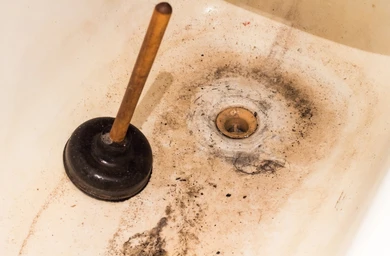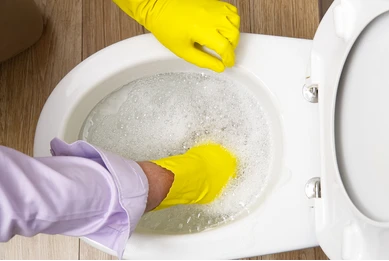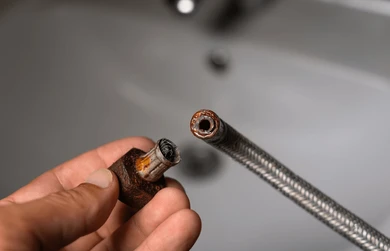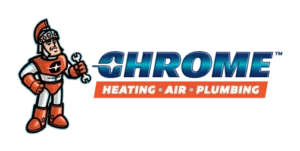Why Your Shower Won’t Drain Properly and How to Fix It
A slow-draining shower is a frustrating issue that can turn a refreshing shower experience into a stressful one. Over time, water begins to pool at your feet, and if left unchecked, this minor annoyance can evolve into a significant plumbing problem. Understanding the common causes of shower drainage issues and how to fix them can save you from more expensive repairs down the road. In this article, we’ll explore the reasons why your shower won’t drain properly and provide actionable steps to fix it. Common Causes of Shower Drain Blockages Shower drains are prone to clogs for several reasons. From the accumulation of hair and soap scum to mineral buildup and foreign objects, multiple factors can impede water flow. Below are some of the most common causes: 1. Hair Accumulation Hair is the number one culprit behind most shower drain clogs. As you wash your hair, strands inevitably fall out and are washed down the drain. Over time, these strands can collect in the drainpipe, gradually forming a blockage. This hairball can trap soap scum and other debris, exacerbating the clog. 2. Soap Scum Soap may seem harmless, but over time it can lead to drainage issues. Soap scum, created when soap combines with hard water, forms a sticky residue that clings to the sides of your pipes. When combined with hair, it can create stubborn clogs. 3. Mineral Buildup If you live in an area with hard water, mineral deposits may accumulate inside your pipes over time. This buildup can restrict the flow of water, causing slow drainage. Although this issue isn’t as common as hair or soap scum, it’s more challenging to fix without professional help. 4. Foreign Objects Sometimes, small objects like shampoo bottle caps, razors, or children’s bath toys accidentally fall into the shower drain. These objects can create an instant blockage and will often require removal by a professional plumber. 5. Tree Root Intrusion Though less common, tree roots can invade your plumbing system and obstruct drainage. This usually happens if there are cracks or small openings in your sewer line. Tree roots naturally grow toward water sources, and when they find an entry point, they can cause severe blockages. How to Fix a Slow-Draining Shower Now that we’ve covered the common causes of shower drain blockages, let’s discuss how to resolve the issue. Depending on the severity of the clog, you can try several different methods, ranging from DIY solutions to professional intervention. 1. Remove Hair Manually One of the simplest fixes is to remove the blockage manually. Hair is often the primary cause of slow drainage, and in many cases, it’s visible just below the drain cover. Step 1: Remove the drain cover. If the cover is screwed in, use a screwdriver. Step 2: Using a wire hanger, tweezers, or a drain snake, pull out as much hair and debris as possible. Step 3: After removing the hair, run hot water to check if the drain is clear. This method is often effective for small blockages that haven’t formed deep in the plumbing. 2. Use Boiling Water Boiling water can help dissolve soap scum and small clogs caused by hair or other debris. This method is particularly useful for clearing soap scum buildup. Step 1: Boil a large pot of water. Step 2: Carefully pour the boiling water down the drain in stages, allowing each pour to work through the clog before adding more. Be cautious with this method if you have PVC pipes, as boiling water can soften them over time. 3. Try a Plunger A plunger can be a surprisingly effective tool for clearing shower drain clogs. It works by creating suction that can dislodge the blockage. Step 1: Apply petroleum jelly around the rim of the plunger to create a better seal. Step 2: Fill the shower with enough water to cover the bottom of the plunger. Step 3: Place the plunger over the drain and push down firmly before pulling up in a quick motion. Repeat this process several times until the blockage clears. 4. Use a Drain Snake A drain snake, also known as an auger, is a tool designed to navigate through the pipes and break up or pull out clogs. Step 1: Insert the drain snake into the drain until you encounter resistance. Step 2: Rotate the handle of the snake to break up or snag the clog. Step 3: Once you feel the blockage clear, carefully pull the snake out, ensuring that any debris comes out with it. Drain snakes are highly effective for deeper clogs that manual removal tools can’t reach. 5. Use a Natural Drain Cleaner Chemical drain cleaners can be harsh on your pipes and harmful to the environment. Instead, consider using a natural drain cleaner made from ingredients you probably already have in your kitchen. Step 1: Pour half a cup of baking soda down the drain. Step 2: Follow with half a cup of white vinegar. You’ll notice fizzing as the two ingredients react. Step 3: Let the mixture sit for about 15 minutes, then flush with boiling water. This combination can dissolve clogs caused by hair and soap scum without damaging your pipes. 6. Call a Professional Plumber If none of these methods resolve the issue, or if you suspect that tree roots or mineral buildup are causing the problem, it’s time to call a professional plumber. A plumbing expert can use specialized tools, such as hydro jetting equipment, to clear the pipes effectively. Preventing Future Shower Drain Clogs Preventing clogs in your shower drain is much easier and more cost-effective than dealing with them after they’ve formed. Here are some simple tips to help you keep your drain flowing freely: Use a Drain Cover: A drain cover or hair catcher can prevent hair and other debris from entering the drain. Clean the Drain Regularly: Make it a habit to remove hair and debris from the drain after each shower. Regular cleaning can prevent buildup over time. Run











